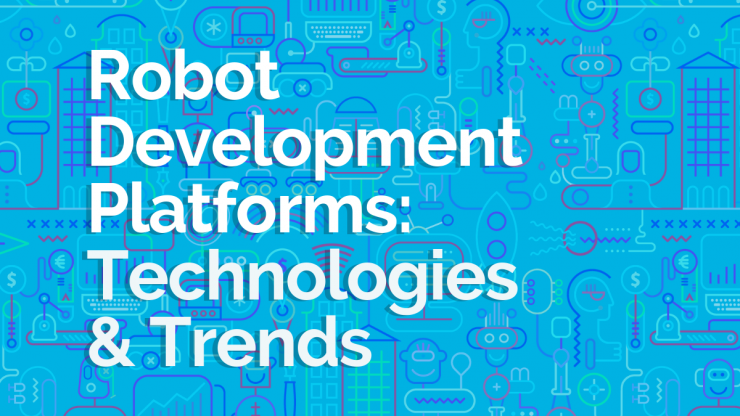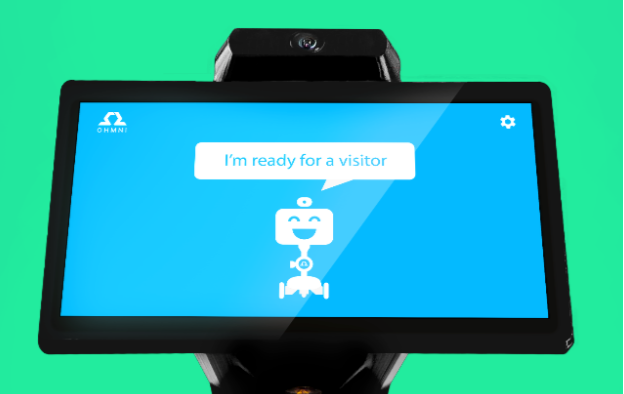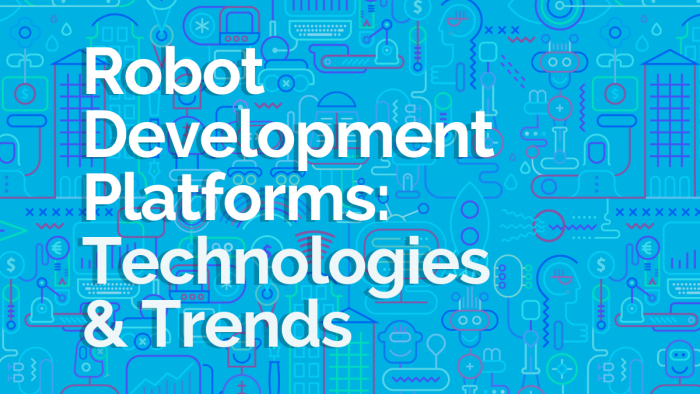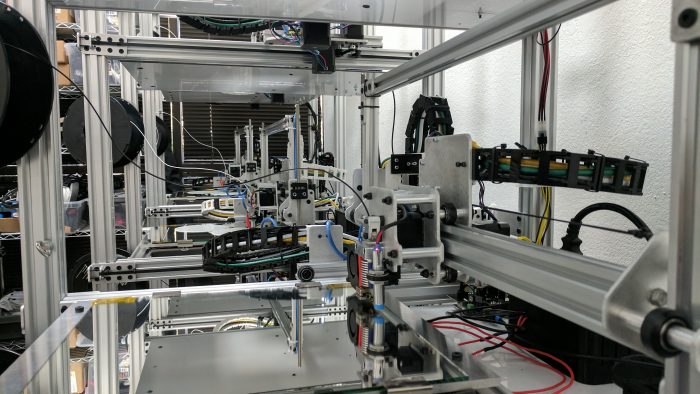The market for telepresence robots is expanding around the globe. Recent reports on the state of the global telepresence robot market found that over the next 6 years, the market value of telepresence robots is predicted to almost triple. This article recaps relevant telepresence robot market reports and highlights current trends. The market value of the telepresence robot industry was approximately $150 million USD in 2018, and by 2026 it is thought that the market…

Robot development platforms are bringing big changes to the robotics field, enabling more people to use robotics devices for a wider array of applications. There are many different robotics development platforms out there, including OhmniLabs’ own robot development platform.
Let’s delve into various robot development platforms and examine their differences, benefits and use cases, before taking a look at Ohmni’s robot development platform.
WHAT ARE ROBOT DEVELOPMENT PLATFORMS?
Robot development platforms are programming interfaces intended to make the development of robotics programs, and thus the utilization of robotic devices, easier and more intuitive. Robot development platforms can be conceived of as a type of Application Programming Interface or API.
The function of an API is to take predefined functions and tools and compile them together into modules that can easily be used by those with less experience in the particular field or specialty the API is designed for. In this sense, robot development platforms are intended to give those who don’t specialize in robotics programming the tools they need to create programs and have a robot carry out desired functions and routines.
WHAT ARE THE BENEFITS OF ROBOT DEVELOPMENT PLATFORMS?
As mentioned, one of the primary benefits of robot development platforms is that they enable those with less technical expertise to create programs for robotic devices. This makes it possible for a much wider, more diverse population to create applications, bringing their unique ideas and inspirations with them.
Robot development platforms also make the occurrence of bugs and errors in the creation of programs less likely. Because the programs are created from pre-defined functions, or building blocks, these functions are extensively tested and debugged by the development team before the development platform is created.
DIFFERENCES BETWEEN ROBOT DEVELOPMENT PLATFORMS
One of the biggest robot development platforms currently available is called the Robot Operating System or ROS. ROS is more complicated than other robot development platforms as it was designed around complex mobile manipulation platforms with actuated sensing for tilting lasers, pan/tilt sensor heads, and sensors attached to arms. But it’s also better supported and has more options and capabilities.
While ROS is more difficult to use than other development platforms, it is much more versatile and it’s especially useful for academic robots. A follow-up to ROS, called ROS-2 is also in development.
There are a handful of language-specific platforms that exist, such as: Cylon.js, Gobot, and Johnny-Five.
Cylon.js is a JavaScript-based framework which maintains support for over 40 different computer platforms. As such, it has a wide variety of potential uses.
Gobot is based on the programming language Go and it currently has support for around 35 different computing platforms. Finally, Johnny-five is another JavaScript framework that also works with Internet-of-Things or IoT devices, and it also has support for Arduino-based robots.
ROS is a general use development platform as opposed to a language-specific platform. Of course, we also have use-specific platforms such as:
- Simbad
- Gazebo
- Player
- Fawkes
- MOOS
- Rock
- YARP
Both Simbad and Gazebo are development platforms that enable users to model elements of the real-world environment using simplified physics and graphical modeling functions.
Player is a framework that once saw extremely common use for the management of robot sensor systems, and though the model has somewhat fallen out of favor in recent years, it’s still available online.
Fawkes is a development framework intended for use in developing fast, mobile robots, which mainly sees use in competitions and by robot hobbyists. MOOS is a development platform maintained by the Oxford Mobile Robotics Group, and it is intended for the management of locomotive robots, including autonomous cars.
Finally, YARP is intended as a package that combines actuators, processors and sensors together, making the management of all of them simple.
KEY DISTINCTIONS BETWEEN DEVELOPMENT PLATFORMS
We’ve already hinted at some of the advantages of using robot development platforms, but let’s take a closer look at the unique benefits provided by some of the platforms we’ve mentioned.
ROS offers easy package management, negating many of the long install and setup processes of packages. It also enables process-based message passing, low-level device control, and hardware abstraction.
The low-level device control means that more complex routines and functions can be developed for robots supporting ROS. ROS is complex when compared to other development platforms, and it has a steep learning curve, yet it enables the usage of a wide array of functions and systems not supported by other development platforms.
Johnny-Five makes creating Arduino-based robots and using Javascript much easier, and it also has plug-ins that allow use of the platform on non-Arduino based devices. Meanwhile, Cylon.js has a massive range of computing platforms that it supports and developers are able to make use of these platforms with very little setup.
Similar to Cylon.js, Gobot supports many different computer platforms and most of these platforms are able to be used with Cylon “out of the box”, with little in the way of customization required.
As for the various specialty robot platforms, they all have their own unique use cases they excel at when compared to other robot development platforms.
PRIMARY USE CASES FOR ROBOT DEVELOPMENT PLATFORMS
The main reason for using a robot development platform is that it makes the creation of robot functions and logic much easier. Since developers don’t have to manually code in specific functions or routines when using development platforms, they are able to create functions and complete development faster.
Robot development platforms are often used when creating complex functions which would take substantially more time to manually code, or when the robot device has been opened up for use by third parties. Robot development platforms are used when the robot device needs to customizable and extensible, able to take on functions that the original development team may not have conceived of.
USE CASES FOR OHMNI DEVELOPER EDITION
The Ohmni Developer Edition is best suited for situations where telepresence robots would be of use, situations where communication between people over distance would be enhanced by a mobile robot. These include use cases like touring construction sites and industrial facilities, or in the classroom to facilitate remote education.
The Ohmni Developer Edition is customizable to meet the needs of different users, as the needs of one use case will be different from the needs of another use case. For example, the modular nature of the developer kit enables users to swap out parts that don’t meet their needs. If a sturdier base or higher screen is needed, these customizations could potentially be made.
The Ohmni Developer Edition will also eventually receive customization options like user-trainable navigation. This trainable navigation feature will allow the robot to remember certain critical paths around areas, understanding the optimal way to navigate a potentially large, complex region.
OTHER OHMNI DEVELOPER EDITION FEATURES
The Ohmni Developer Edition comes with a number of features that make it much more versatile and useful than other mobile robot development kits. For example, it comes with a hardware expansion kit which allows for easy integration of hardware devices. It also possesses LIDAR and a depth-based camera, which help it navigate the world around it and safely move through areas with people and other objects.
The Ohmni Developer Edition also supports the use of various helpful APIs, such as a Ready-to-use Speech API through Google Assistant and DialogFlow, as well as a Cloud Programming API. These APIs are compatible with Ohmni’s deep learning module.
Lastly, the Ohmni Developer Edition happens to be human-scale, which assists in its telepresence robot functions, being able to more readily simulate eye-contact through a large 10.1’’ IPS touch screen, which many other models lack.
AN AFFORDABLE PRICE
There’s one last thing that makes the Ohmni Developer Edition particularly notable when compared to other development kits — its price. The price of the Ohmni Developer Edition is relatively affordable, being thousands of dollars cheaper than some of the other mobile robot developer platforms available.
The Ohmni Developer Edition, much like other robot development platforms, is intended to make it easier for developers to create unique, important functions for the robot. The developer edition of the Ohmni Telepresence Robot has many abilities and functions that distinguish it from other mobile robotic devices, all available at a competitive price point.
To start exploring your own human-scale robot applications, visit the Ohmni Store to purchase your Ohmni Developer Edition today.
https://store.ohmnilabs.com/collections/ohmni-developer-platform
The biggest misconception for 3D printing is that anyone can easily design parts and print them instantly. Even with recent advances in consumer-level 3D printing, 3D printing has yet to allow anyone to print parts without already having experience or spending the time to learn about the process. This guide breaks down the essentials on how to create designs for 3D printing if you are new to 3D printing or are struggling to achieve good…


